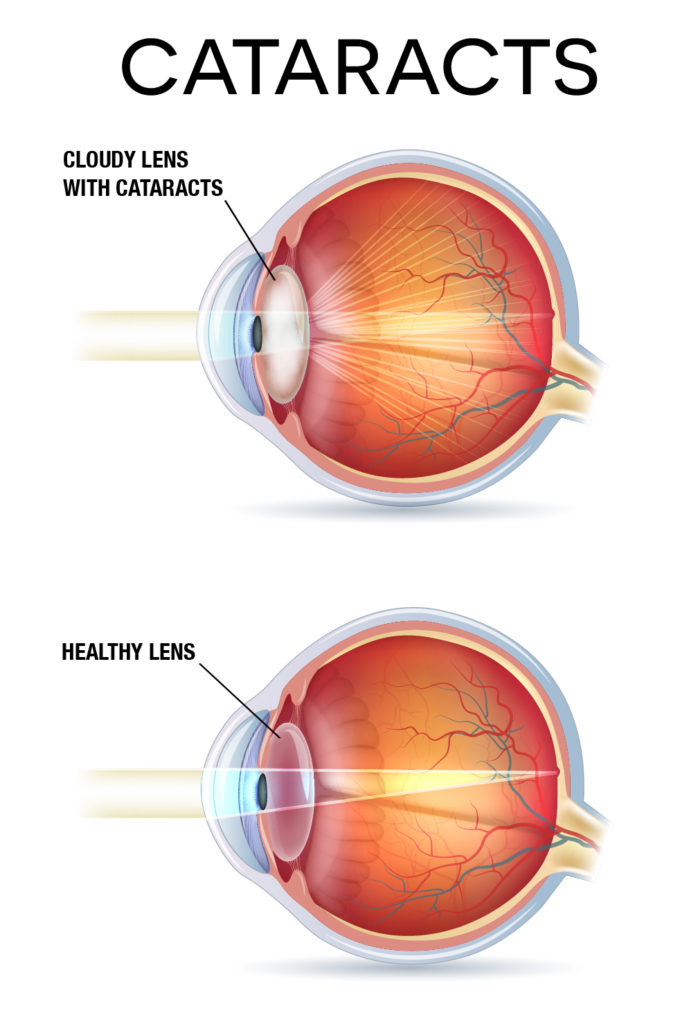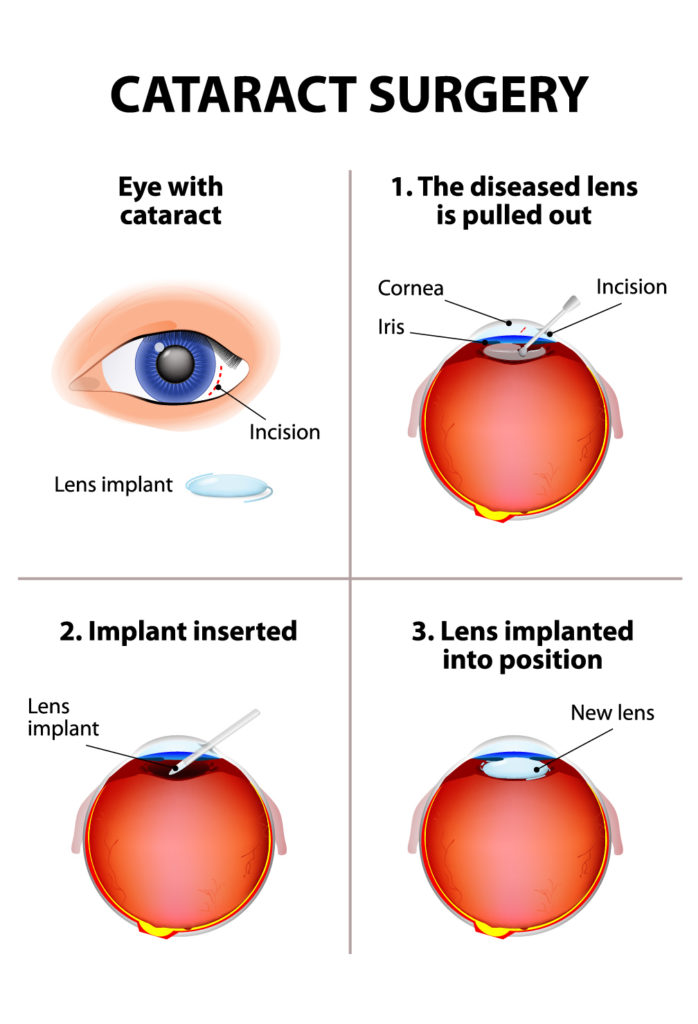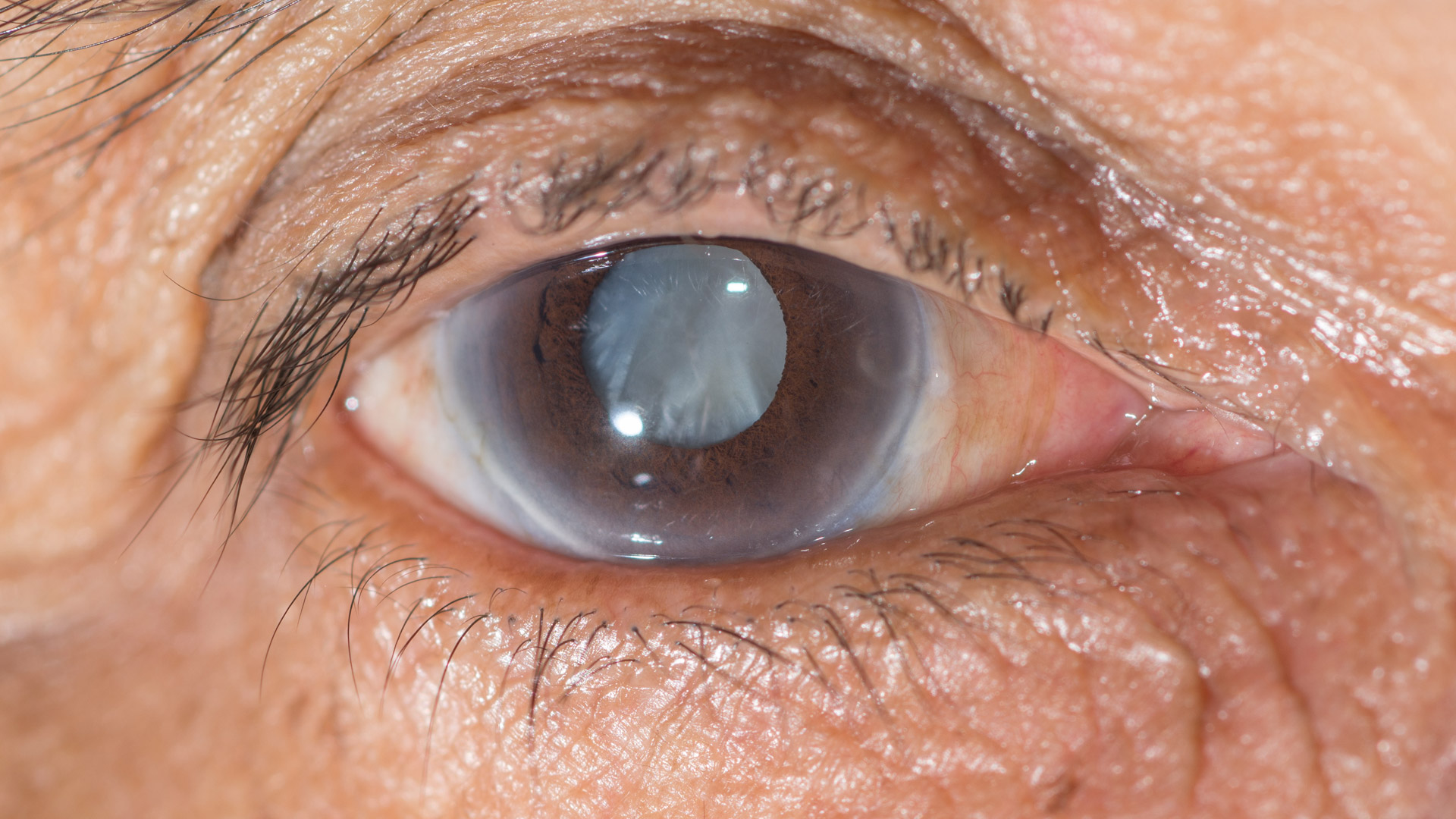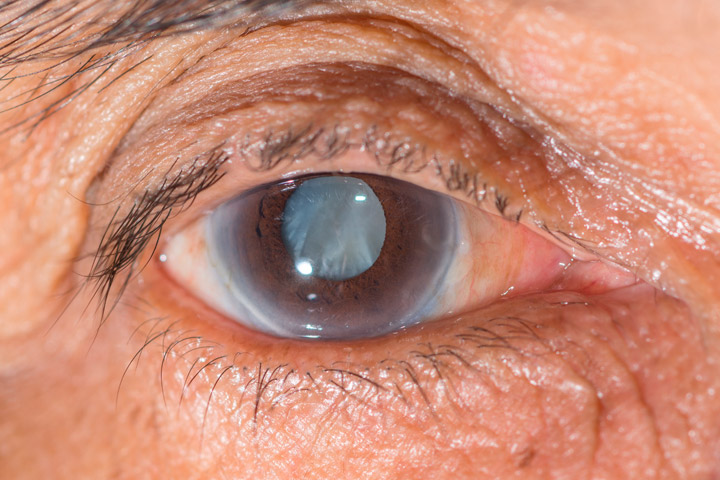WHAT IS A CATARACT?
Cataracts cause progressive, painless loss of vision. The lens clouds naturally as we age, so people over the age of 65 usually see a gradual reduction of vision. No one is exactly sure what causes cataracts. In younger people, they can result from an injury, certain medications or illnesses such as diabetes. Prolonged exposure to ultraviolet light may also play a role in the formation of cataracts. Studies have also shown that cigarette smokers have a higher risk of developing cataracts than non-smokers.
 SYMPTOMS
SYMPTOMS
Vision impairment is the most significant symptom of a cataract. In the early stages, if the cataract is small, you may experience little to no vision issues. However, once a cataract has progressed, the cloudiness can further envelop the clear lens, which ultimately distorts vision. Other symptoms include glare, haloes or arcs around lights. Some symptoms such as a browning or yellowing of colors occur so slowly over time that a person is often unaware of them. Patients routinely observe how bright and vibrant colors appear after cataract surgery.
AM I AT RISK FOR CATARACTS?
No one is exactly sure what causes cataracts. However, risk factors include:
- Aging
- Underlying health issues, such as diabetes, glaucoma, retinal detachment and congenital problems
- Use of tobacco, alcohol and steroid medicines
- Exposure to prolonged sunlight (UV Rays)
- Family history (genetics)
CATARACT TREATMENT
Treatment for cataracts is done through surgery, the most commonly performed surgical procedure in the United States. Cataract surgery is a minimally invasive procedure that involves numbing the eyes with anesthesia and then making a tiny incision into which an ultrasonic probe is inserted. The probe breaks up, or emulsifies, the cloudy lens into tiny pieces and then suctions them out of the eye. Once the cloudy lens has been removed, a new artificial lens is implanted into the eye. This is known as an intraocular lens (IOL) and can often be inserted through the same incision that the old lens was removed from. Typically, the surgery can be performed with topical anesthesia and mild IV sedation. Most patients do not require stitches and can resume driving and other normal activities in 24 hours. Cataract surgery is a safe and effective procedure where most patients experience little to no pain. However, as is the case in any surgical procedure, there are risks involved. Your surgeon will discuss these on an individual basis.
Learn about current treatments here.


